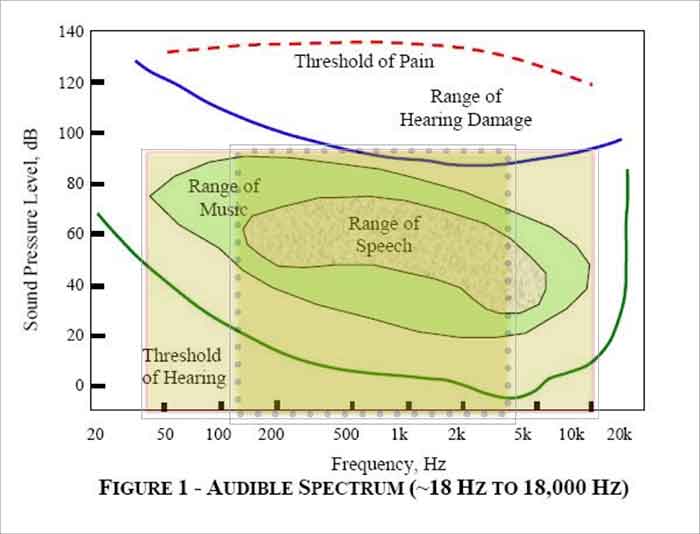Sound Mitigation Beyond STC
STC Frequency Ranges Omit the Wider Dynamic Ranges Beyond Speech
The audible spectrum (the range within which humans hear sound) includes frequencies ranging from 20Hz to 20kHz. The natural resonance of the human ear is around 4kHz. If your noise source has a lot of intensity or volume at this frequency or the frequencies surrounding this band, it will be very easy for a person to hear it.
Music falls within the audible spectrum, covering a frequency range from 40Hz to 15kHz roughly. Typically this is called the MTC or Music Transmission Classification, which exceeds the frequency spectrum that is covered by STC.
The frequency spectrum upon which an STC (Sound Transmission Classification) rating is averaged covers frequencies ranging from 125Hz to 4kHz. This is far narrower than what humans hear as perceivable sound, as it is focused on the human range of speech.
If you are trying to isolate acoustical or amplified music, or amplified speech, you must take the wider dynamics into consideration. Not only are the frequency dynamics much wider, but also the intensity or amplitude will always be greater with music than mere dialogue. This is very important to remember if you are basing your isolation on STC alone. Make sure the sound or noise you’re trying to isolate doesn’t fall outside of the measurable range. It is does, you will never meet your anticipated expectations for noise abatement.
So keep in mind that while STC is an important tool for determining your noise abatement needs, it does not encompass the entire range of sounds that we hear and you should plan your abatement strategy accordingly.

This image shows the Audible Spectrum
